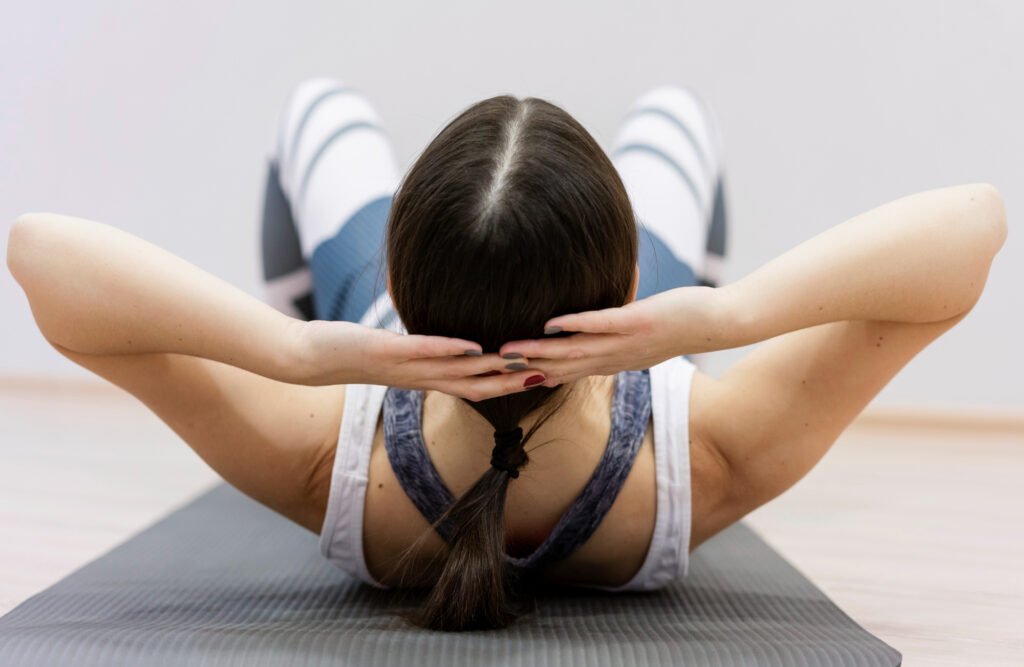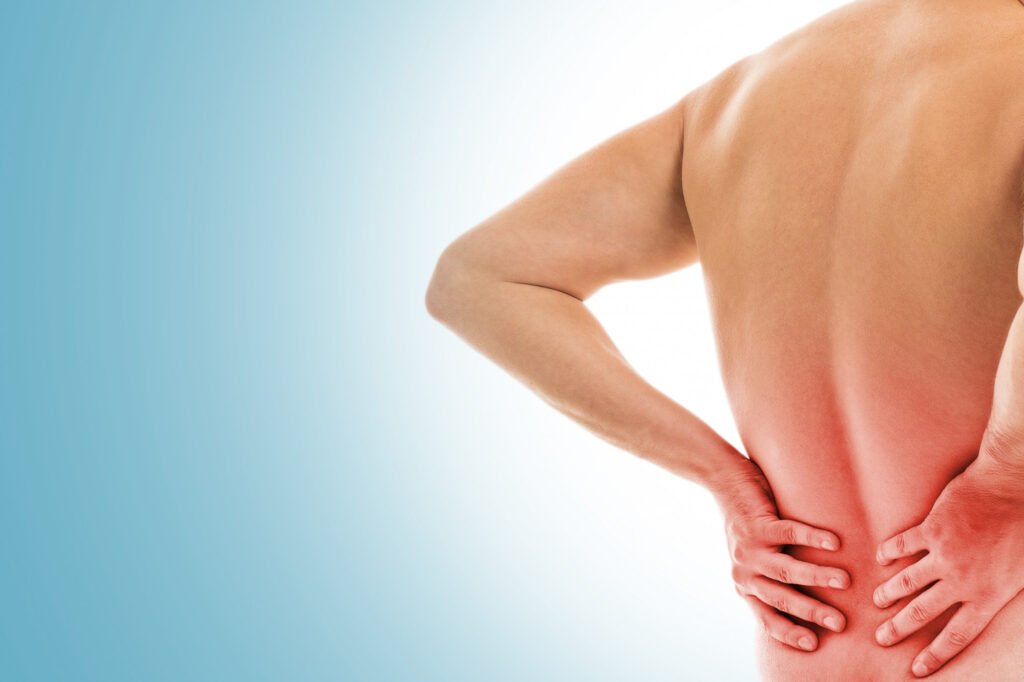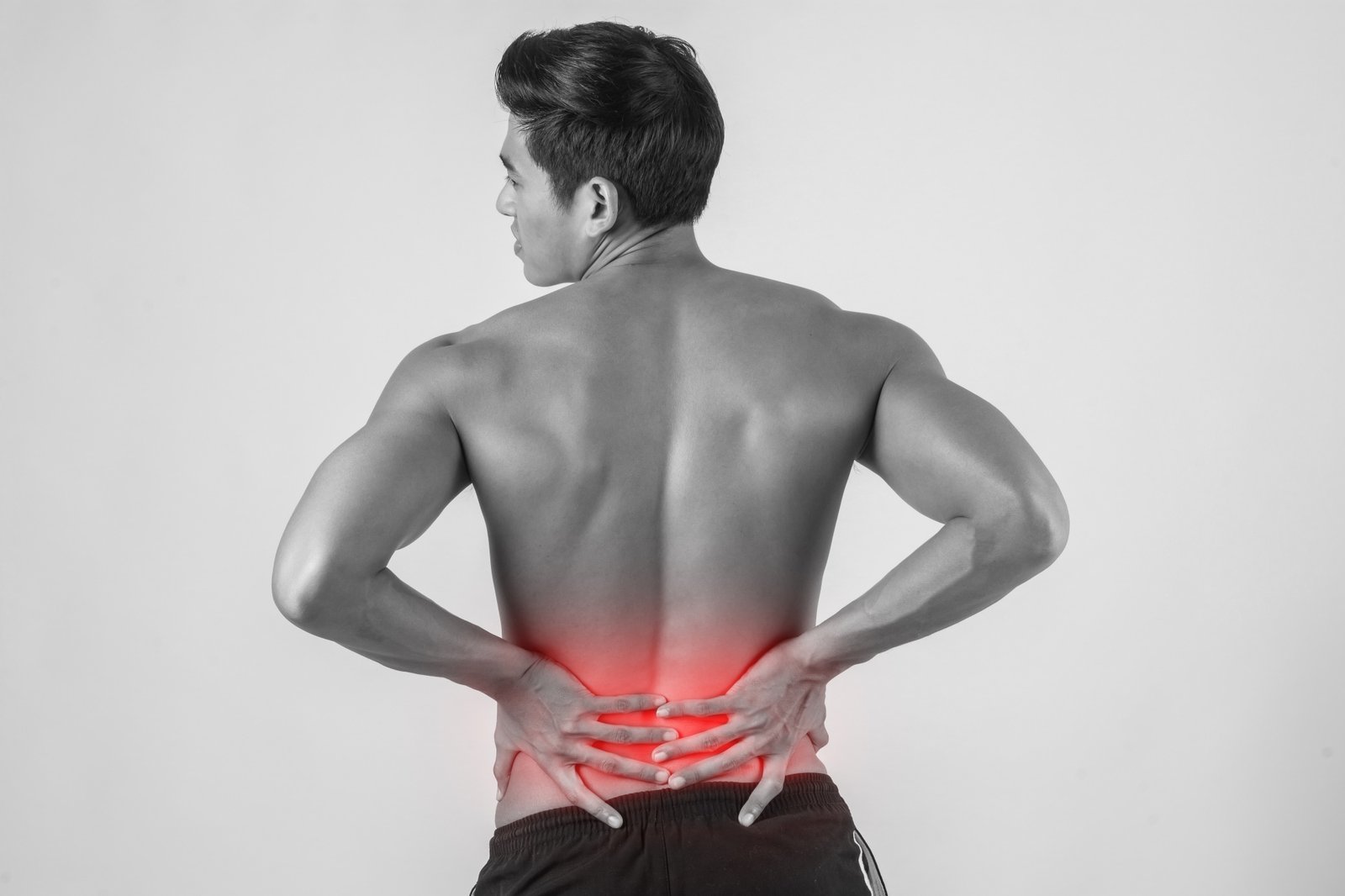Low back pain, a ubiquitous discomfort affecting countless individuals, can be likened to an uninvited guest that overstays its welcome. Nestled between the ribs and the pelvis, the lumbar region bears the brunt of our daily endeavors, from desk-bound tasks to daring athletic feats. It whispers its presence with a subtle ache, a reminder of the body’s vulnerability. Yet, this seemingly mundane pain can reveal a complex interplay of muscles, ligaments, and discs, each contributing to the symphony of sensations. Whether a mischievous twist triggers it or it results from the cumulative toll of sedentary routines, low back pain becomes a poignant nudge from our bodies, urging us to pause, listen, and perhaps recalibrate our approach to the physical dance of life.
Where does lower back pain come from?
Back pain is most commonly found in the lower back. The lumbar spine (lumbar spine) is more susceptible to injury and damage than the cervical and thoracic spines.
“Back pain can arise from factors such as excess weight, insufficient physical activity, stress, or a herniated disc.”
In addition, they can always act as a warning sign of inflammation or injury, but they can also have various other causes. Persistent issues in the lower back can lead to the emergence of chronic pain, evolving into a distinct clinical scenario. These include lumbago, i.e., acute lumbar spine syndrome, irritation of the sciatic nerve, or osteoporosis,” explains the doctor.
In 2020, low back pain (LBP) affected 619 million people globally, and it is estimated that the number of cases will increase to 843 million by 2050, driven largely by population expansion and ageing (1).
Back pain, depending on duration
The classification of pain into acute, subacute, and chronic is based on how long the patient has had symptoms or pain.
Acute back pain
We define acute back pain as its onset either for the first time or after a hiatus of at least six pain-free months, accompanied by symptoms lasting a maximum of six weeks. A considerable number of individuals experiencing this condition witness noticeable improvement in their acute back pain within a few weeks.
Subacute back pain
If back pain persists beyond six weeks but not exceeding three months, it is categorized as subacute. This type of pain serves as the bridge between acute and chronic conditions.
Chronic back pain
Persistent back pain endures for more than twelve weeks, manifesting as recurring discomfort with varying intensity. This enduring discomfort tends to increase with age. Chronic back pain often coexists with other health conditions, referred to as comorbidities, such as wear-related and inflammatory joint diseases, osteoporosis, stroke, heart failure, depression, or excessive weight.
Variations in low Back Pain Based on its Underlying Causes
Depending on the cause, back pain can be divided into two categories: specific and non-specific back pain.
Specific back pain
The cause of the LBP can be clearly identified. But it doesn’t have to be in the spine area. Diseases of other organs are often the reason for back problems.
Possible causes of specific back pain include:
- Muscle tension
- Blockages of the vertebrae
- disc prolapse
- Wear and tear on the spine
- Osteoporosis (bone loss)
- pregnancy
- Shingles
- Acute inflammation of the prostate
- Pyelonephritis
- Kidney stones
- Chest tightness
- Heart attack
- lung infection
- Spinal and rib tumors
Non-specific back pain
The doctors have been unable to identify a definite cause for the symptoms. “Non-specific back pain” is identified as the predominant factor behind the majority of the complaints.
Prevalence increases with age up to 80 years, while the highest number of LBP cases occurs at the age of 50–55 years. LBP is more prevalent in women (2).
What helps with low back pain?
Anyone who complains of severe pain in the lower back can receive treatment from doctors and physiotherapists, as well as preventive measures. Our expert has tips on what those affected should pay attention to:
- Integrate enough exercise into your daily routine and active breaks into your daily routine
- Avoid one-sided loads if possible
- Reduce excess weight to counteract persistent LBP
"Historically, it was commonly thought that people experiencing back pain should take it easy, yet our current knowledge underscores the importance of incorporating exercise. Participating in physical activities not only boosts blood flow but also eases muscle tension, highlighting a modern perspective on managing back discomfort."
When do I need to seek medical advice if I have back pain?
LBP frequently stems from benign sources, such as muscle tension resulting from poor posture or inadequate physical activity. The doctor recommends that individuals experiencing significant pain that significantly impairs their quality of life and persists for consecutive days consult a healthcare professional.
What does a lower back exam look like?
The most important point when examining lower back pain is the correct anamnesis (medical history). To do this, doctors ask patients specific questions:
- Where and when does the pain occur?
- How long has the pain existed?
- What increases or alleviates the symptoms?
- Have you taken painkillers?
The next step is a physical examination. The doctors pay attention to posture as well as the shape of the spine, muscle hardening, mobility, muscle strength, and reflexes. In addition, psychological and occupational stress are taken into account, which can affect the course of the disease.
A magnetic resonance imaging (MRI) scan of the lumbar spine can help find the exact cause of the pain. It allows doctors to get a precise picture of the spine based on the images.
“The expert emphasizes that the same holds true when there is a sensation of numbness in the legs.” He also recommends visiting a doctor if there is atypical, persistent, or increasing back pain.
Psychosocial risk factors for chronic low back pain in primary care
Psychological factors can impact the progression of LBP, encompassing thought and behavior patterns that either contribute to or exacerbate the condition. LBP often serves as a prevalent physical manifestation of depression and sleep disorders.
“When all physical aspects seem in order yet LBP persists, exploring one’s psychological well-being becomes crucial, as it can significantly contribute to back issues.”
During the medical history assessment, it is essential to address psychosocial risk factors, such as stress, workplace conflicts, or a predisposition to depression. This examination aids in gauging the likelihood of developing chronic LBP.
What does therapy for low back pain look like?
Experts usually recommend conservative therapies, such as physiotherapy, massage, and cold or heat applications. If these forms of therapy do not help, minimally invasive injection or infiltration treatments can be considered.
However, caution is advised when it comes to indications for surgery. “If the aim is solely to reduce back pain, the doctor cannot give the patient any guarantee of success,” says the expert. However, if damage to the back leads to serious nerve failure, an operation is often the last resort.
This is often the case, especially in neurosurgery, with a herniated disc or spinal canal stenosis. Not every herniated disc that can be seen on the MRI image or that causes pain necessarily requires surgery. Mild nervous breakdowns are usually tolerated at first. LBP often subsides within the first few days or weeks.
Exercises for lower back pain

- Bend, lift, and carry correctly: When lifting and placing loads, always bend your knees and keep your back straight. When carrying, you should keep the load close to your body.
- Back-friendly workplace: Make sure your workplace is ergonomically designed. So the working height and seat height adapt to your body size, your legs have enough room to move, and you can adopt a natural posture.
- Exercises for LBP: Strengthen your back with special exercises that you learn, for example, in back school or during physiotherapy.
- Relaxation process: Breathe deeply and find peace through autogenic training and meditation, or with yoga, qigong, and tai chi. The latter should only be used under instructions.
- Heat treatment: Relax the muscles with heat, for example, with a hot water bottle, heat, or mud packs. This provides relief from LBP, especially for non-specific pain.
Physiotherapy exercises for lower back pain
Some yoga poses and gentle stretches may help loosen tight muscles in your lower back.
Be especially gentle and cautious if you have any type of injury or health concern. It’s best to talk with a doctor first before starting any new types of exercise, especially if a recent injury may be the cause of your pain.
1. Child’s Pose
Embrace the tranquility of the classic Child’s Pose, a yoga position renowned for its gentle yet effective stretch on the gluteus maximus, latissimus dorsi (lats), and spinal extensors. This pose serves as a soothing remedy, alleviating pain and tension throughout the spine, neck, and shoulders.
Immerse yourself in the calming influence it imparts to your body, facilitating the release of tightness in the lower back muscles and enhancing spinal flexibility. Executing a child’s pose involves the following steps:
- Position yourself with your hands and knees on the ground, settling your hips onto your heels.
- Initiate a hip hinge, folding forward and extending your hands in front of you.
- Allow your belly to rest on your thighs.
- Extend your arms forward or alongside your body, palms facing downward.
- Concentrate on deep breaths, consciously relaxing any areas of tension.
- Maintain the pose for up to one minute.
Incorporate this pose seamlessly into your stretching routine, repeating it as desired between other stretches for an optimal and rejuvenating experience.
2. Knee-to-chest stretch
This particular stretch targets the relaxation of your hip, thigh, and glute muscles, contributing to an overall sense of ease.
To perform the knee-to-chest stretch, adhere to the following instructions:
- Begin by lying on your back, with both knees bent and your feet resting flat on the floor.
- Choose to keep your left knee bent or fully extend it along the floor.
- Pull your right knee towards your chest, interlocking your hands either behind your thigh or at the top of your shinbone.
- Extend your spine, reaching from the top to the bottom, while ensuring your hips remain grounded.
- Inhale deeply, allowing any tension to dissipate.
- Maintain this position for a duration of 30 seconds to 1 minute.
- Repeat the sequence with the opposite leg.
3. Seated spinal twist
This timeless variation provides a deep stretch for your hips, glutes, and back, promoting enhanced flexibility in your spine while elongating your abdominal muscles, shoulders, and neck. The applied pressure during this twist not only fosters a sense of suppleness but also engages and invigorates your internal organs.
To execute the seated spinal twist, adhere to the following instructions:
- Begin in a seated position on the floor, extending both legs straight out in front.
- Bend your left knee, situating your foot on the exterior of your right thigh.
- Extend your right arm over the outside of your left thigh.
- Position your left hand behind you, providing additional support.
- Initiate the twist from the base of your spine, turning towards the left side.
- Maintain the pose for a duration of up to 1 minute.
- Replicate the sequence on the opposite side.
4. Cat-Cow
The Cat-Cow sequence serves as a fantastic method to invigorate your spine and simultaneously promote flexibility in your shoulders, neck, and chest.
Here’s a step-by-step guide to performing the cat-cow stretch:
- Begin in a tabletop position with your hands and knees on the ground.
- Inhale deeply, pressing into your hands and feet, allowing your gaze to lift upwards as your abdomen expands with each breath.
- Upon exhaling, gently tuck your chin to your chest and arch your spine towards the ceiling.
- Flow seamlessly between these two movements, syncing each transition with your breath.
- Engage in this rhythmic sequence for a duration of 1 to 2 minutes.
5. Pelvic tilt
Enhancing the resilience of your abdominal muscles is a key outcome of performing pelvic tilts, contributing to the alleviation of discomfort and tension in your lower back. Additionally, these exercises impart positive effects on your glutes and hamstrings.
Execute a pelvic tilt with the following steps:
- Begin by lying on your back, both knees bent, and feet planted firmly on the floor.
- Activate your abdominal muscles, flattening your back against the floor.
- Maintain normal breathing while holding this pose for a duration of up to 10 seconds.
- Gradually release the position, taking a few deep breaths to induce relaxation.
- Aim for 1 to 3 sets, each comprising 3 to 5 repetitions.
Which doctor should you go to if you have low back pain?

Individuals experiencing persistent lower back pain should seek consultation with a neurosurgeon or orthopedist specializing in spinal conditions. For specific cases, pain therapists are also appropriate contacts.
Not all back pain is the same
Back pain is primarily caused by strained muscles and ligaments. But also due to wear and tear on the spine and intervertebral discs. The pain is often in the lower back. It is important to find the cause of the sometimes severe back pain. It is often a non-specific back pain that usually goes away on its own. If back pain and tension in the lower back persist for a long time, you should consult a doctor.
References
1. GBD 2021 Low Back Pain Collaborators. Global, regional, and national burden of low back pain, 1990–2020, its attributable risk factors, and projections to 2050: a systematic analysis of the Global Burden of Disease Study 2021. Lancet Rheumatol 2023: 5: e316–29.
2. GBD 2019: Global burden of 369 diseases and injuries in 204 countries and territories, 1990–2019: a systematic analysis for the Global Burden of Disease Study 2019. https://vizhub.healthdata.org/gbd-results/.

1 thought on “Low Back Pain (LBP): Unraveling Types, Causes, and Solutions”